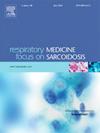Molecular mechanisms of passive smoking-induced respiratory diseases
IF 3.1
3区 医学
Q2 CARDIAC & CARDIOVASCULAR SYSTEMS
引用次数: 0
Abstract
Cigarette smoke, including second hand and third hand smokes, is a well-established risk factor for respiratory diseases, and accounts for one in five deaths in the United States annually. Passive smoking involves second hand smoke (SHS) and third hand smoke (THS) that contain the similar carcinogenic compounds, oxidants and toxicants that are present in mainstream smoke (MS) such as formaldehyde, acrolein, aromatic amines, polycyclic aromatic hydrocarbons (PAHs), and various inorganic substances. SHS particles are smaller than those in MS, enabling them to reach the distal regions of the lungs. These toxic chemicals are considerably deleterious to lungs’ health and cause serious respiratory diseases. The inhaled toxicants in SHS and THS directly damage airway epithelial cells of the lungs, leading to oxidative stress, inflammation and tissue damage, and interfere with cellular repair mechanisms leading to mucociliary dysfunction, thereby exacerbating chronic inflammatory responses. The molecular mechanisms associated with SHS exposure include DNA adduct formation, epigenetic modifications of the genes and altered signaling mechanisms leading to lung dysfunction. These changes are irrespective of age or gender, and raise significant concerns regarding long-term pathological consequences of exposure to passive smoke. Here we have reviewed the major molecular pathways that play crucial roles in manifesting the lung pathogenesis related to passive smoking.

被动吸烟诱发呼吸系统疾病的分子机制
吸烟,包括二手烟和三手烟,是一个公认的呼吸系统疾病的危险因素,每年在美国有五分之一的人死于吸烟。被动吸烟包括二手烟(SHS)和三手烟(THS),它们含有与主流烟雾(MS)相似的致癌化合物、氧化剂和有毒物质,如甲醛、丙烯醛、芳香胺、多环芳烃(PAHs)和各种无机物。SHS颗粒比MS小,使其能够到达肺的远端区域。这些有毒化学物质对肺部健康相当有害,并引起严重的呼吸系统疾病。SHS和三手烟吸入的有毒物质直接损伤肺部气道上皮细胞,导致氧化应激、炎症和组织损伤,干扰细胞修复机制导致纤毛粘膜功能障碍,从而加重慢性炎症反应。与SHS暴露相关的分子机制包括DNA加合物的形成、基因的表观遗传修饰和导致肺功能障碍的信号机制改变。这些变化与年龄或性别无关,并引起了对暴露于被动吸烟的长期病理后果的重大关注。在此,我们综述了在表明与被动吸烟有关的肺部发病机制中起关键作用的主要分子途径。
本文章由计算机程序翻译,如有差异,请以英文原文为准。
求助全文
约1分钟内获得全文
求助全文
来源期刊

Respiratory medicine
医学-呼吸系统
CiteScore
7.50
自引率
0.00%
发文量
199
审稿时长
38 days
期刊介绍:
Respiratory Medicine is an internationally-renowned journal devoted to the rapid publication of clinically-relevant respiratory medicine research. It combines cutting-edge original research with state-of-the-art reviews dealing with all aspects of respiratory diseases and therapeutic interventions. Topics include adult and paediatric medicine, epidemiology, immunology and cell biology, physiology, occupational disorders, and the role of allergens and pollutants.
Respiratory Medicine is increasingly the journal of choice for publication of phased trial work, commenting on effectiveness, dosage and methods of action.
 求助内容:
求助内容: 应助结果提醒方式:
应助结果提醒方式:


